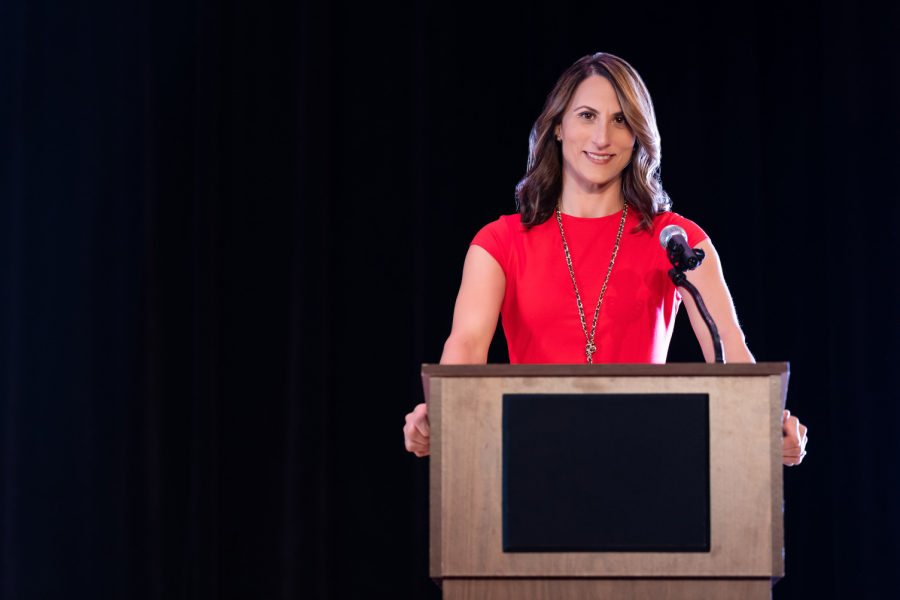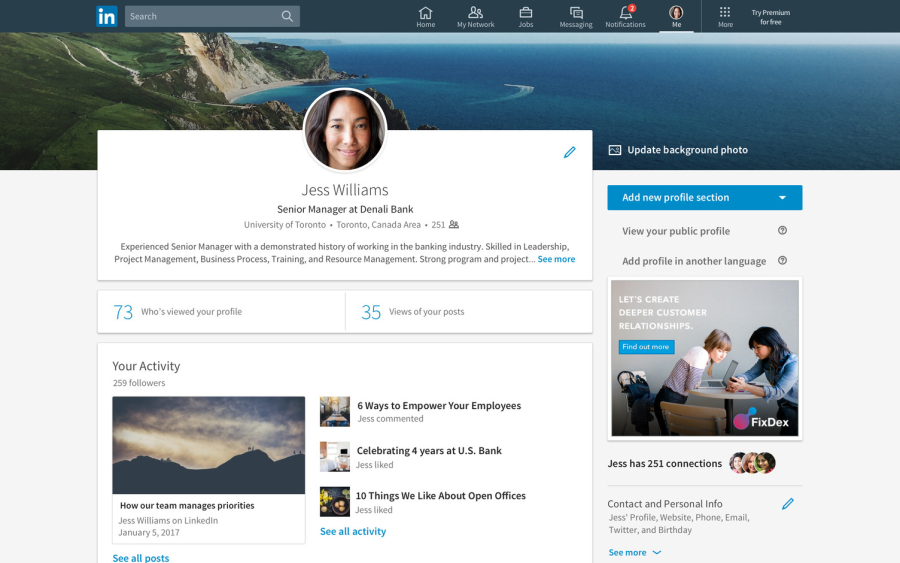The Power of Online Career Branding Tools

More than 700 million people around the world are LinkedIn members, representing a variety of professional backgrounds, including executives, small-business owners, students, and job seekers. As the world’s largest professional network on the internet, LinkedIn serves as a site for users to discover career opportunities, connect with colleagues, and learn professional development insights. Yet beyond establishing a profile that lists an individual’s career experience, education, and skills, users may not be taking full advantage of all of the social networking site’s features and benefits.
A LinkedIn profile is more than a resume, says Donna Serdula, founder and owner of Vision Board Media LLC and LinkedIn-Makeover.com.
“When people sign up for LinkedIn, it looks like a resume because they copy and paste to be done with it. But unfortunately, doing that shortcut doesn’t provide for the opportunity that’s out there on LinkedIn,” says Serdula, author of “LinkedIn Profile Optimization for Dummies.”
Recognizing that it’s hard for people to write about themselves, she started her business to help executives, professionals, and entrepreneurs optimize their LinkedIn profiles and build a professional brand.
“Your LinkedIn profile should be your professional story,” Serdula says. “A person needs to be able to read it and get a sense of who you are, what you offer, why you do what you do, and what you stand for.”
Essential Elements
Niels Reib, a Copenhagen, Denmark-based career strategist who focuses on branding, suggests LinkedIn users incorporate five to seven keywords into their profile that relate to their expertise and position.
“LinkedIn is a search engine just like Google, so if a hiring professional looks for a marketing manager within adventure parks, then you want to have that in your title because that makes you rank higher in the search results,” he says. “You need to have those keywords sprinkled in throughout the profile.”
Serdula says a profile’s “Headline”—the text displaying a user’s current title and company—can fit up to 220 characters and is “highly sensitive in a search within LinkedIn.” Plus, all of a user’s activity on LinkedIn is accompanied by his or her profile picture, name, and “Headline.” Users can also utilize the “About” section to share more about themselves—their goals, philosophies, or even favorite quotes and books.
“A successful profile is one where the person reading it smiles, immediately understands what you can do for them, and wants to reach out, call, or send an email. It should always result in some type of a conversion,” Serdula says, highlighting the importance of adding contact information to a profile.

Opportunities for Connection and Engagement
Still, while 55 job applications are submitted every second on LinkedIn, it shouldn’t just be viewed as a job search tool.
“This is a long-term commitment with LinkedIn. You should always have that profile up, and it’s going to change depending on your goal,” Serdula says. “When you’re looking for a job, the profile should look like that of someone who is the perfect, ideal candidate for the position you’re targeting. Once you’re hired, you want to be branding yourself as the expert in that position.”
She recommends engaging with LinkedIn daily to keep networks and relationships alive and fresh. Users can scroll through their home feeds to see updates from their network, share content, write colleagues recommendations, facilitate connections among potential collaborators, and message connections. “Keep yourself out there, top of mind, so when people need or think of something, they remember you,” Serdula says.
The No. 1 mistake Reib says he sees people make on LinkedIn is that they only go to their network connections when they need something, and to him, that’s a turnoff.
“What you need to establish first before you go—and do the ask—is trust. You need to establish a relationship,” he says. “If it’s someone that you reach out to cold, then always make sure to write a personalized invitation, provide some kind of value, and let them know how you came across them—maybe you read an article that they were mentioned in or they’ve been working at a company you would like to know more about.”
Serdula says it’s important to always be connecting, as all vendors, clients, co-workers, bosses, classmates, and professors make up a person’s network.
“You want your online network to reflect your offline network,” she says. “It’s not just who you know; it’s who knows you. It’s not to collect the connections, but to save those connections and continue to utilize them.”
Creating a Personalized Website
After optimizing a LinkedIn profile, Reib advises professionals create a branded personal website on a domain they own, such as his site, NielsReib.com.
“If you base your entire career profile on LinkedIn, you’re doing it on a rented lot because you’re not in control. You don’t own the information that you put on LinkedIn; LinkedIn does,” he says. “That’s why I’m such a cheerleader for your own websites because that’s where you can build the story of your career and a very unique knowledge base of how you can contribute to the industry you’re in.”
Reib says the website should have a homepage with a description of the person’s skills and areas of expertise, an about page that shares interests and personality, and a blog.
“Where you can really create value is by blogging on your website. Say you write a blog post about how to get more visitors to your theme park, then you can take out three or five of the main topics and put them in a post on LinkedIn that links back to the website. That way, you will use LinkedIn to get traffic to your website, where a recruiter or hiring manager can get to know you even better. It takes them about six seconds to go through your resume, but if you get them on your website, they’ll stay there on average for three minutes,” he says. “There are some powerful advantages that you can draw upon when you take the time to build a website, and it’s fairly easy today.”
Contact Funworld Assistant Editor Juanita Chavarro Arias at [email protected].
